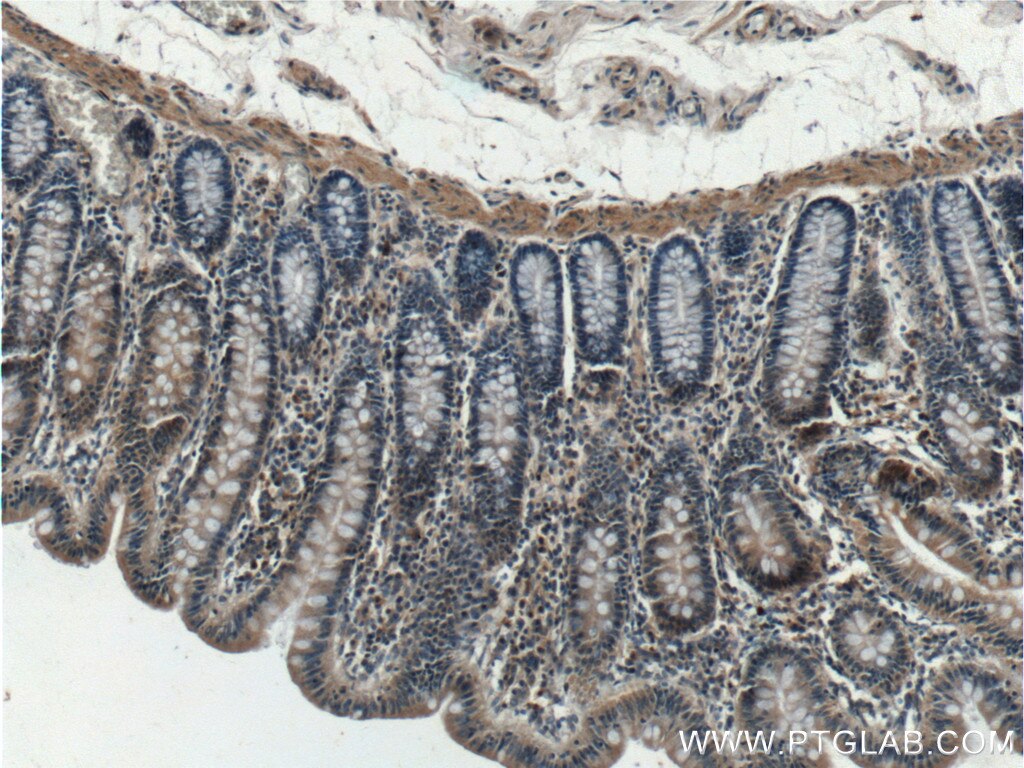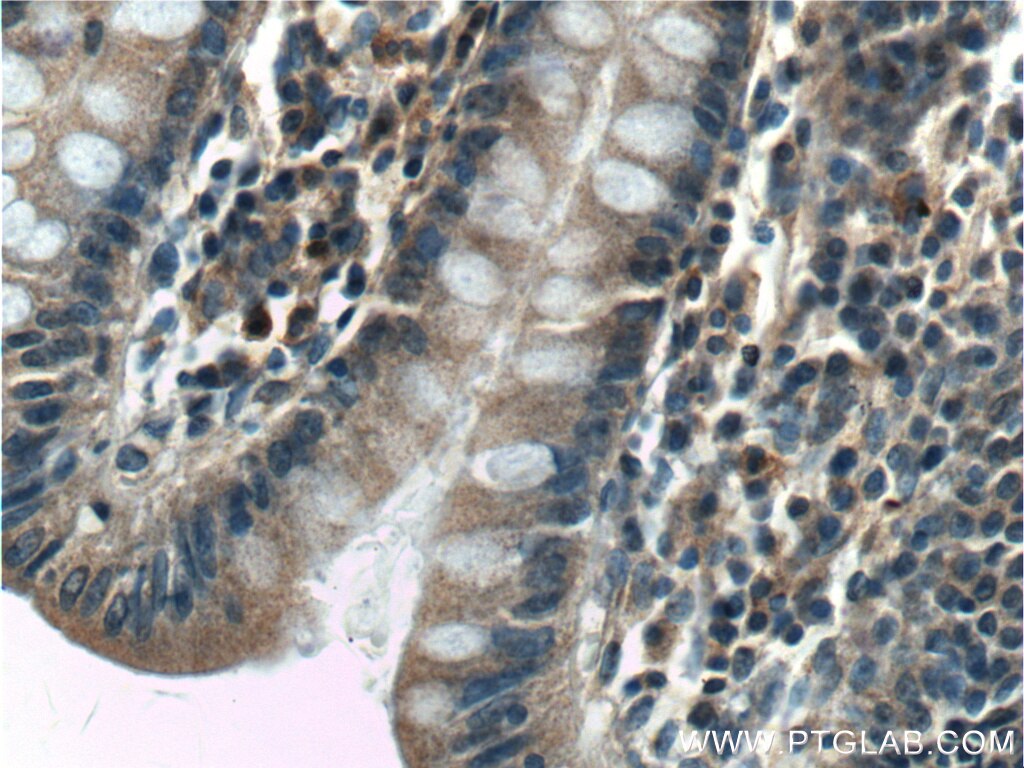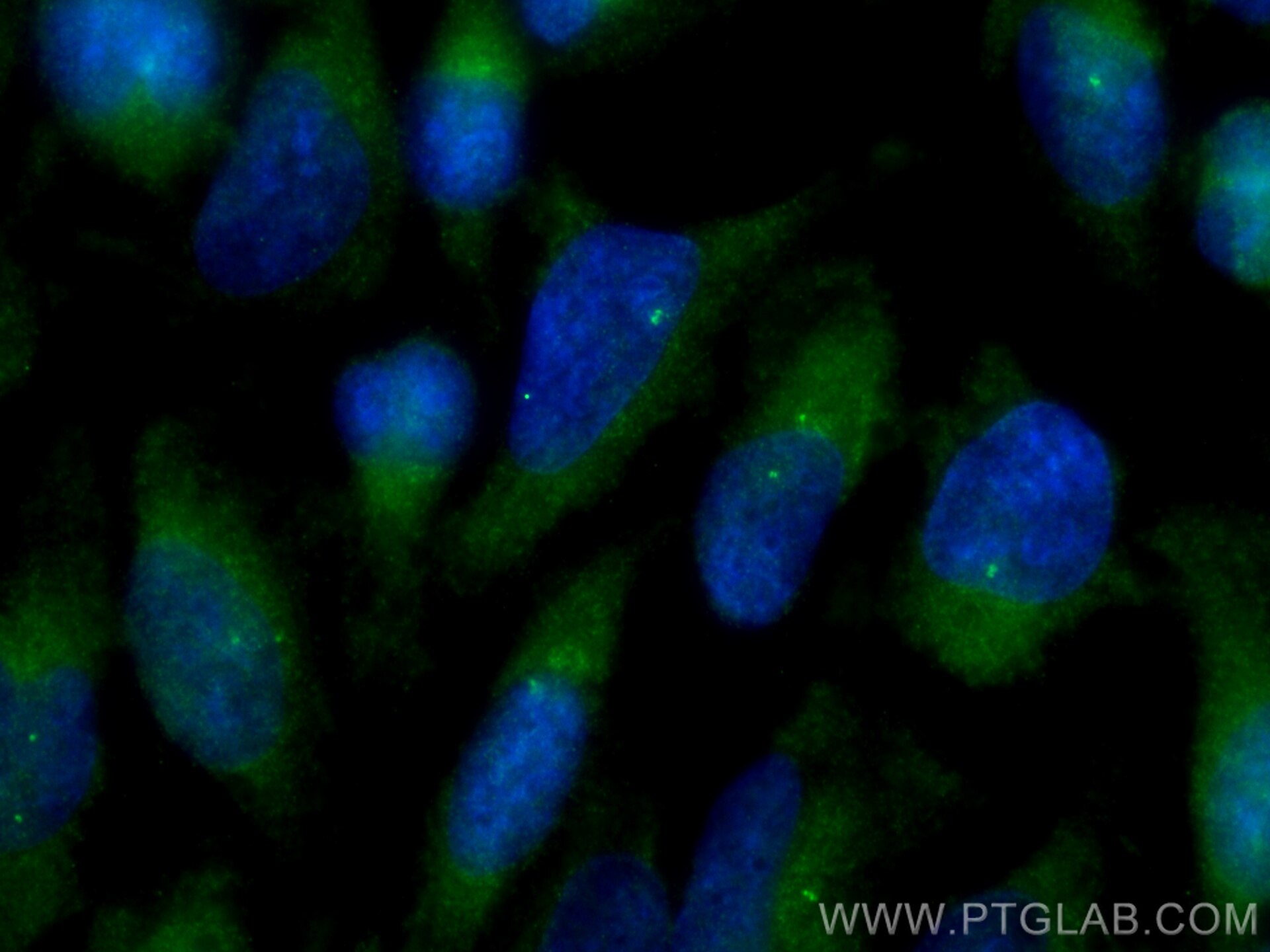- Featured Product
- KD/KO Validated
SDCCAG8 Polyklonaler Antikörper
SDCCAG8 Polyklonal Antikörper für IHC, IF/ICC, ELISA
Wirt / Isotyp
Kaninchen / IgG
Getestete Reaktivität
human, Hund, Maus, Ratte, Zebrafisch
Anwendung
WB, IHC, IF/ICC, IP, ELISA
Konjugation
Unkonjugiert
Kat-Nr. : 13471-1-AP
Synonyme
Galerie der Validierungsdaten
Geprüfte Anwendungen
| Erfolgreiche Detektion in IHC | humanes Kolongewebe Hinweis: Antigendemaskierung mit TE-Puffer pH 9,0 empfohlen. (*) Wahlweise kann die Antigendemaskierung auch mit Citratpuffer pH 6,0 erfolgen. |
| Erfolgreiche Detektion in IF/ICC | HeLa-Zellen |
Empfohlene Verdünnung
| Anwendung | Verdünnung |
|---|---|
| Immunhistochemie (IHC) | IHC : 1:50-1:500 |
| Immunfluoreszenz (IF)/ICC | IF/ICC : 1:400-1:1600 |
| It is recommended that this reagent should be titrated in each testing system to obtain optimal results. | |
| Sample-dependent, check data in validation data gallery | |
Veröffentlichte Anwendungen
| KD/KO | See 3 publications below |
| WB | See 9 publications below |
| IHC | See 2 publications below |
| IF | See 9 publications below |
| IP | See 1 publications below |
Produktinformation
13471-1-AP bindet in WB, IHC, IF/ICC, IP, ELISA SDCCAG8 und zeigt Reaktivität mit human, Hund, Maus, Ratten, Zebrafisch
| Getestete Reaktivität | human, Hund, Maus, Ratte, Zebrafisch |
| In Publikationen genannte Reaktivität | human, Maus, Ratte, Zebrafisch |
| Wirt / Isotyp | Kaninchen / IgG |
| Klonalität | Polyklonal |
| Typ | Antikörper |
| Immunogen | SDCCAG8 fusion protein Ag4264 |
| Vollständiger Name | serologically defined colon cancer antigen 8 |
| Berechnetes Molekulargewicht | 713 aa, 83 kDa |
| Beobachtetes Molekulargewicht | 83 kDa |
| GenBank-Zugangsnummer | BC032454 |
| Gene symbol | SDCCAG8 |
| Gene ID (NCBI) | 10806 |
| Konjugation | Unkonjugiert |
| Form | Liquid |
| Reinigungsmethode | Antigen-Affinitätsreinigung |
| Lagerungspuffer | PBS mit 0.02% Natriumazid und 50% Glycerin pH 7.3. |
| Lagerungsbedingungen | Bei -20°C lagern. Nach dem Versand ein Jahr lang stabil Aliquotieren ist bei -20oC Lagerung nicht notwendig. 20ul Größen enthalten 0,1% BSA. |
Hintergrundinformationen
SDCCAG8, also named as CCCAP and NY-CO-8, plays a role in the establishment of cell polarity and epithelial lumen formation. It may play a role in ciliogenesis. Loss of SDCCAG8 function as a cause of a retinal-renal ciliopathy and validates exome capture analysis for broadly heterogeneous single-gene disorders. SDCCAG8 is localized at both centrioles and interacts directly with OFD1 (oral-facial-digital syndrome 1), which is associated with NPHP-RC. SDCCAG8 has 4 isoforms with MW 83,78,73 and 41 kDa (refer to UniProt). Catalog#13471-1-AP can recognize all the four isoforms.
Protokolle
| Produktspezifische Protokolle | |
|---|---|
| IHC protocol for SDCCAG8 antibody 13471-1-AP | Protokoll herunterladen |
| IF protocol for SDCCAG8 antibody 13471-1-AP | Protokoll herunterladen |
| Standard-Protokolle | |
|---|---|
| Klicken Sie hier, um unsere Standardprotokolle anzuzeigen |
Publikationen
| Species | Application | Title |
|---|---|---|
Nat Genet Candidate exome capture identifies mutation of SDCCAG8 as the cause of a retinal-renal ciliopathy. | ||
Neuron SDCCAG8 Regulates Pericentriolar Material Recruitment and Neuronal Migration in the Developing Cortex. | ||
J Am Soc Nephrol Renal-retinal ciliopathy gene sdccag8 regulates DNA damage response signaling.
| ||
Cell Death Dis Selective loss of RPGRIP1-dependent ciliary targeting of NPHP4, RPGR and SDCCAG8 underlies the degeneration of photoreceptor neurons. |




